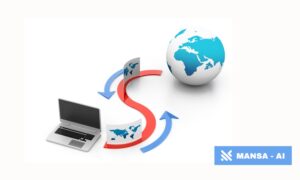The landscape of the Internet of Things (IoT) is undergoing a significant transformation, driven by the emergence of energy harvesting technologies. Bhushan Gopala Reddy, a technical expert in sustainable computing, explores the latest innovations that enable self-powered IoT devices, reducing reliance on conventional batteries and promoting environmental sustainability.
Harnessing Ambient Energy for IoT Devices
Energy harvesting involves converting ambient energy sources into electrical power, eliminating the need for battery replacements. These sources include solar, thermal, kinetic, and radio frequency (RF) energy. The integration of advanced materials and efficient power management strategies has significantly improved the feasibility of self-powered IoT systems.
Solar Power: Efficiency in Artificial and Natural Light
Photovoltaic (PV) cells remain the most widely used energy harvesting technology. Recent innovations in dye-sensitized solar cells (DSSCs) have achieved conversion efficiencies of up to 34% under artificial lighting conditions. Organic photovoltaic (OPV) cells are also gaining traction, offering higher power densities and extended operational lifetimes for indoor IoT applications. These advancements enable continuous energy supply for sensors in smart buildings and industrial environments.
Thermal Energy: Capturing Waste Heat for Power Generation
Thermoelectric generators (TEGs) convert temperature differences into electrical energy. Modern bismuth telluride-based materials have significantly improved power generation capabilities, reaching outputs of 1-10 mW/cm² for industrial applications. In wearable devices, flexible TEGs efficiently harvest body heat, providing a sustainable power source for health monitoring devices.
Kinetic Energy: Power from Motion and Vibrations
Piezoelectric and electromagnetic energy harvesters capture mechanical vibrations and convert them into usable energy. These technologies are particularly useful in industrial environments where machinery vibrations can generate power densities of up to 2 mW/cm³/g². Advanced microelectromechanical system (MEMS) harvesters have further improved power outputs, enabling reliable energy generation from environmental motion. Recent developments in material science have enhanced harvester efficiency through optimized resonant frequencies and broadband operation capabilities. Integration of smart power management circuits allows for efficient energy storage and distribution, making these systems increasingly viable for powering wireless sensor networks and IoT devices. The combination of advanced materials and intelligent control systems has significantly improved the reliability and effectiveness of vibration energy harvesting, opening new possibilities for self-powered industrial monitoring solutions.
RF Energy: Wireless Power for Urban IoT Networks
Radio frequency (RF) energy harvesting is emerging as a viable solution for urban environments. Specialized antennas and rectifier circuits can capture ambient RF signals from Wi-Fi and cellular networks, converting them into power for low-energy IoT sensors. The latest designs achieve conversion efficiencies of up to 60%, making RF energy harvesting an essential component of future IoT ecosystems.
This innovative technology enables self-sustaining IoT devices by scavenging energy from the ever-present RF signals in modern cities. Advanced metamaterial-based antennas and highly efficient rectification circuits have revolutionized the field, allowing for continuous power generation without the need for traditional batteries or wired connections.
Intelligent Power Management: Optimizing Energy Utilization
Efficient energy storage and distribution are critical for maximizing the potential of harvested energy. Advanced power management integrated circuits (PMICs) incorporate maximum power point tracking (MPPT) algorithms, achieving tracking efficiencies of up to 99%. Hybrid storage solutions, combining supercapacitors and lithium-ion batteries, enable long-term energy retention and improved power stability for IoT applications.
Machine Learning in Energy Harvesting Systems
The integration of machine learning algorithms has revolutionized power distribution in self-powered IoT devices. Neural network-based models predict energy demands with over 94% accuracy, allowing for dynamic power allocation. Reinforcement learning algorithms further optimize energy routing, improving efficiency and reducing wastage by 23%.
Future Prospects: Next-Generation Materials and Miniaturization
Nanostructured thermoelectric materials and flexible piezoelectric composites are enhancing energy conversion efficiency. Recent breakthroughs in three-dimensional integration techniques have enabled ultra-compact energy harvesting systems, maintaining high power densities while reducing overall system size.
In conclusion, Energy harvesting is redefining the future of IoT by enabling self-sustaining, environmentally friendly devices. As Bhushan Gopala Reddy highlights, continuous advancements in materials, intelligent power management, and machine learning will further enhance the efficiency and reliability of these technologies. The transition toward energy-autonomous IoT systems marks a significant step in achieving a more sustainable and connected world.





























